
How to Supreme an Orange
Learn how to supreme an orange with this simple tutorial! In this post, I’m sharing the best way to segment an orange, and how to remove the white pith and skin! Plus, learning simple knife skills, like supreme cuts, will enhance the look of your citrus dishes. It’s the best way to cut oranges!

What Is Supreming?
“Supreming” is a fancy way of saying you’re going to peel and cut an orange into segments.
In addition to looking pretty, supreming is an easy way to remove both the peel and the bitter pith very quickly. The pith is the white tissue between the flesh and the skin. You may have seen oranges served this way in fancy restaurants, but it is a great skill for the home cook, too.
The pith of an orange is safe to eat. However, it can sometimes taste bitter or get stuck in your teeth. Therefore, removing it from the outside of an orange prior to segmenting it makes for a nicer presentation when preparing fruit salads or other dishes.
You’ll be left fancy looking, perfect wedge slices of orange.
Equipment Needed
Supreming oranges requires minimal equipment, but for best results I recommend having the following on hand:
- Chef’s knife: You’ll want a sharpened chef’s knife. Do NOT use a serrated knife, because that won’t yield the same, clean results.
- Paring knife: Makes segmenting the orange much easier since a chef’s knife is too big to do so.
- Cutting board: Use one that hasn’t been cross contaminated with onion or garlic, because you don’t want those flavors to transfer. I typically have one cutting board dedicated solely to cutting fruit, as the smell of garlic in particular can remain embedded in cutting boards for weeks.
Katie’s Tip: If you don’t keep a knife sharpener in your kitchen, now’s the time to invest in one! They’re inexpensive, but crucial to keeping your knives sharp for jobs like this.
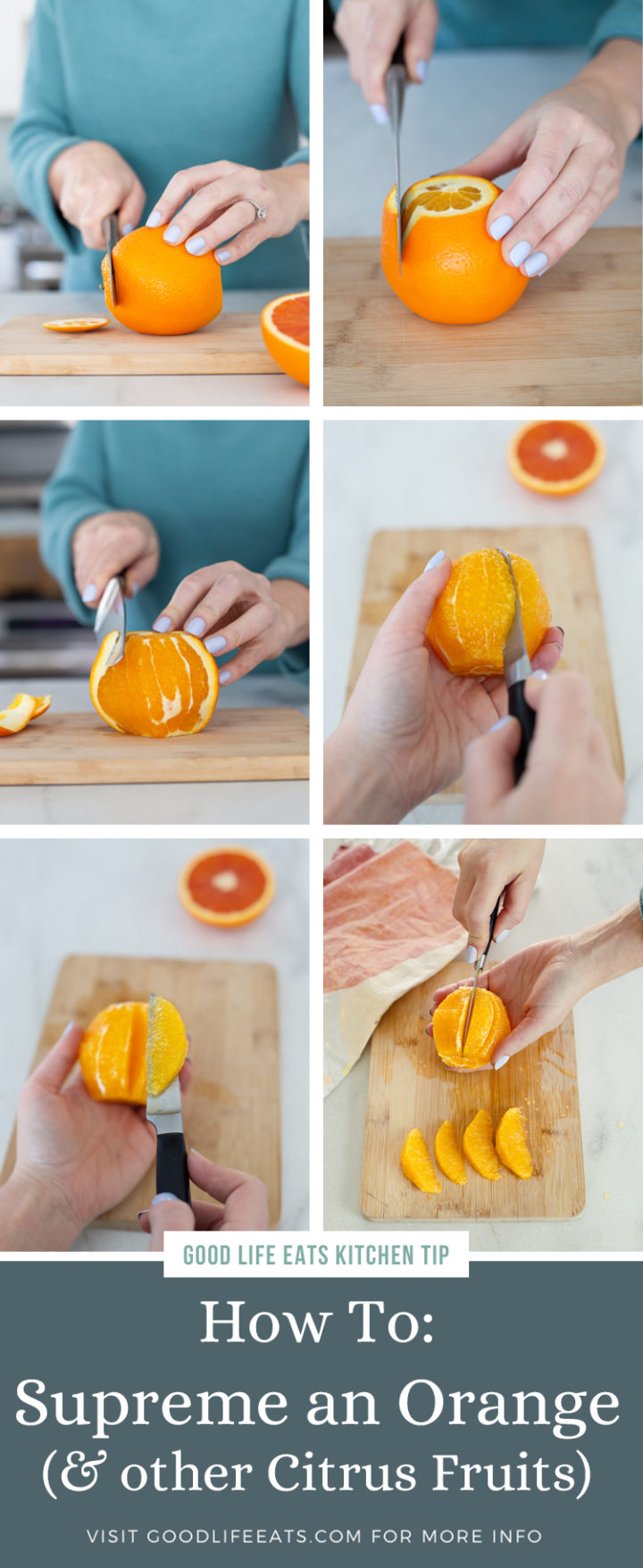
How to Supreme an Orange
Even if you’ve never heard the term “supreme” before, I assure you it’s very easy to learn how to cut orange slices with a little practice.
- The first step to supreme citrus is to slice the very top and bottom of the orange off using a sharp knife. You’ll be removing more skin than flesh when you cut off the ends of the fruit.
- Stand the bottom of the orange upright on one of the cut ends.
- Place your chef’s knife at the top of the orange, between the flesh and the skin.
- Work the knife down to the base, curving around the contour of the fruit to remove the rest of the peel. The goal is to remove the white pith and outer skin without shaving off any of the orange flesh.
- There will be a small bit of membrane that divides each segment. Use a paring knife (or another smooth, small knife) to slice along the inner membranes of the orange and cut out the segments.
- Discard the chewy membrane.
Katie’s Tip: You can use this supreming technique with any citrus fruit. Lemons, limes, grapefruit, tangerines, and more…they can all be supremed, or cut into segments.

How to Use Orange Segments
These beautifully cut oranges wedges can be used in a variety of ways:
- I like to supreme oranges when adding to a fruit salad
- They make a great snack as is
- These beautiful orange segments look great on green salads (try making this mixed greens citrus salad or this fennel and orange salad)
- Orange supremes also make great garnishes on desserts or drinks
Storage Instructions
You can either enjoy the orange segments right away as a snack or in a salad, or you can store them in an airtight container in the fridge. Citrus segments will last up to four days in the refrigerator when you store them properly.
Can You Freeze Segmented Oranges?
Technically, you can freeze an orange that has been supremed into segments. But, I don’t recommend it. Oranges, and other citrus fruits, have high water content. When you freeze oranges, the texture will change dramatically once they’re thawed.
The only time I recommend freezing supremed oranges is when you have cut those oranges for use in recipes like smoothies. The texture won’t matter then, because the fruit will be blended.
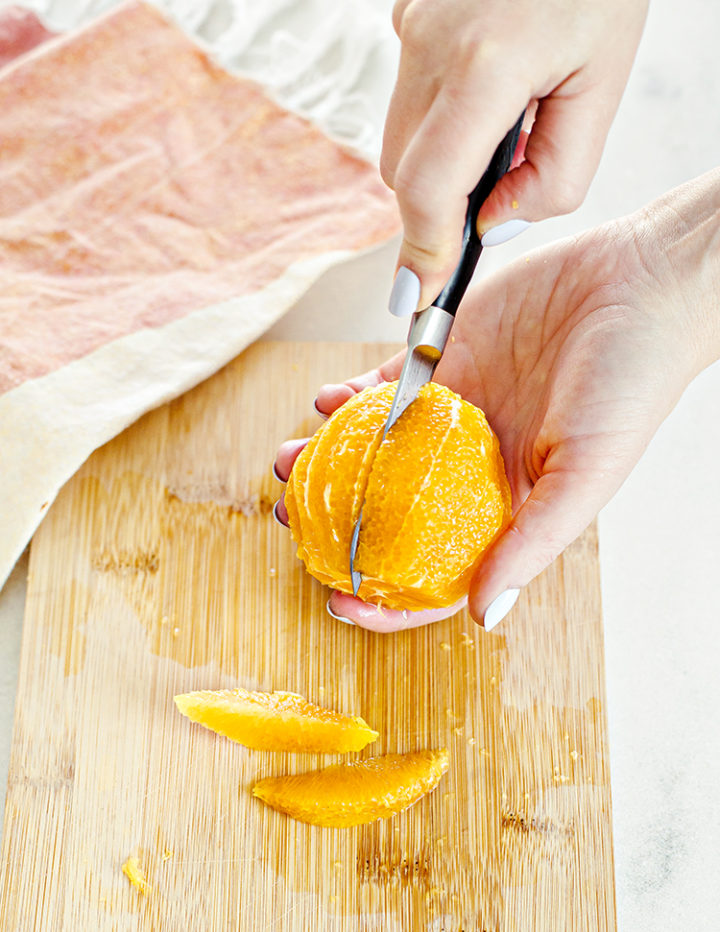
Tips for Segmenting an Orange
- Don’t hold the orange in your palm while peeling: Some tutorials tell you to remove the peel from the orange while holding it in your hand. I don’t advise doing that as a sharp paring knife can quickly and unexpectedly cut through the orange and injure your hand!
- If any pith remains: If there’s any pith left after removing the skin from the orange, simply run your knife back over the white part to remove.
- Don’t remove any flesh: It takes practice, but minimal juice and flesh should be lost when segmenting an orange. If you accidentally removed too much of the orange itself, try again!
- Save the orange skin: Once you’ve cut the citrus supremes, if desired, save the orange skin for drying and turning into potpourri. Dried orange peel smell amazing. Or, zest it beforehand to add to a recipe.
More Kitchen Tips and Tricks:
Another great way to use up any orange you have lying around is to make orange curd. Spread it atop toast or muffins, dollop it onto your morning bowl of yogurt, or use it for baking!
Chocolate curls are easy to make, and they add a touch of elegance to any cake, cupcake, trifle, or cheesecake! In this post, I’ve provided step-by-step instructions on how to make chocolate curls.
Freezing cranberries is a great way to take advantage of winter’s offerings year-round! This post will show you how to freeze cranberries, answer questions about freezing and thawing cranberries, and shares some of my favorite recipes to use frozen cranberries.
Homemade pumpkin puree can be used in many sweet and savory recipes and lets you enjoy pumpkin season year-round! In this post, I’m sharing 5 ways to make pumpkin puree from scratch as well as how to store, freeze, thaw, and use it.
In this post, I walk you through how to freeze butter and how to defrost it. Plus, I answer other FAQs about freezing butter.
Stay Inspired in the Kitchen!
Want more delicious recipes, kitchen tips, and meal inspiration? Sign up for the Good Life Eats Newsletter and get:
✔ Tried-and-true recipes—from quick weeknight meals to special occasion favorites.
✔ Seasonal meal ideas—helping you make the most of fresh, in-season ingredients.
✔ Time-saving kitchen tips—boosting your confidence and creativity in the kitchen.

How to Supreme an Orange
Materials
- 1 Orange
Tools
- Chef Knife
- Paring Knife
- Cutting Board
Instructions
- Slice the very top and bottom off the orange. You’ll be removing more skin than flesh.
- Stand orange upright on one of the cut ends.
- Place your chef’s knife at the top of the orange, between the flesh and the skin.
- Work the knife down to the base, curving around the flesh. The goal is to remove the white pith and outer skin without shaving off any of the orange flesh.
- Use a paring knife (or another smooth, small knife) to slice along the inner membranes of the orange and cut out the segments.
Notes
If there’s any pith left after removing the skin from the orange, simply run your knife back over it to remove.
Recommended Products
As an Amazon Associate and member of other affiliate programs, I earn from qualifying purchases.
Try this Tutorial at Home!
Next time you’re planning to cut oranges, give supreming a try! When you try it, I’d love to hear from you. Leave a comment below and give the tutorial a review for others to see.
On Instagram? Share your photo and tag me with @goodlifeeats and #goodlifeeatsrecipes. I love seeing your photos!
Photography: photos taken in this post are by Rachael from Set the Table.

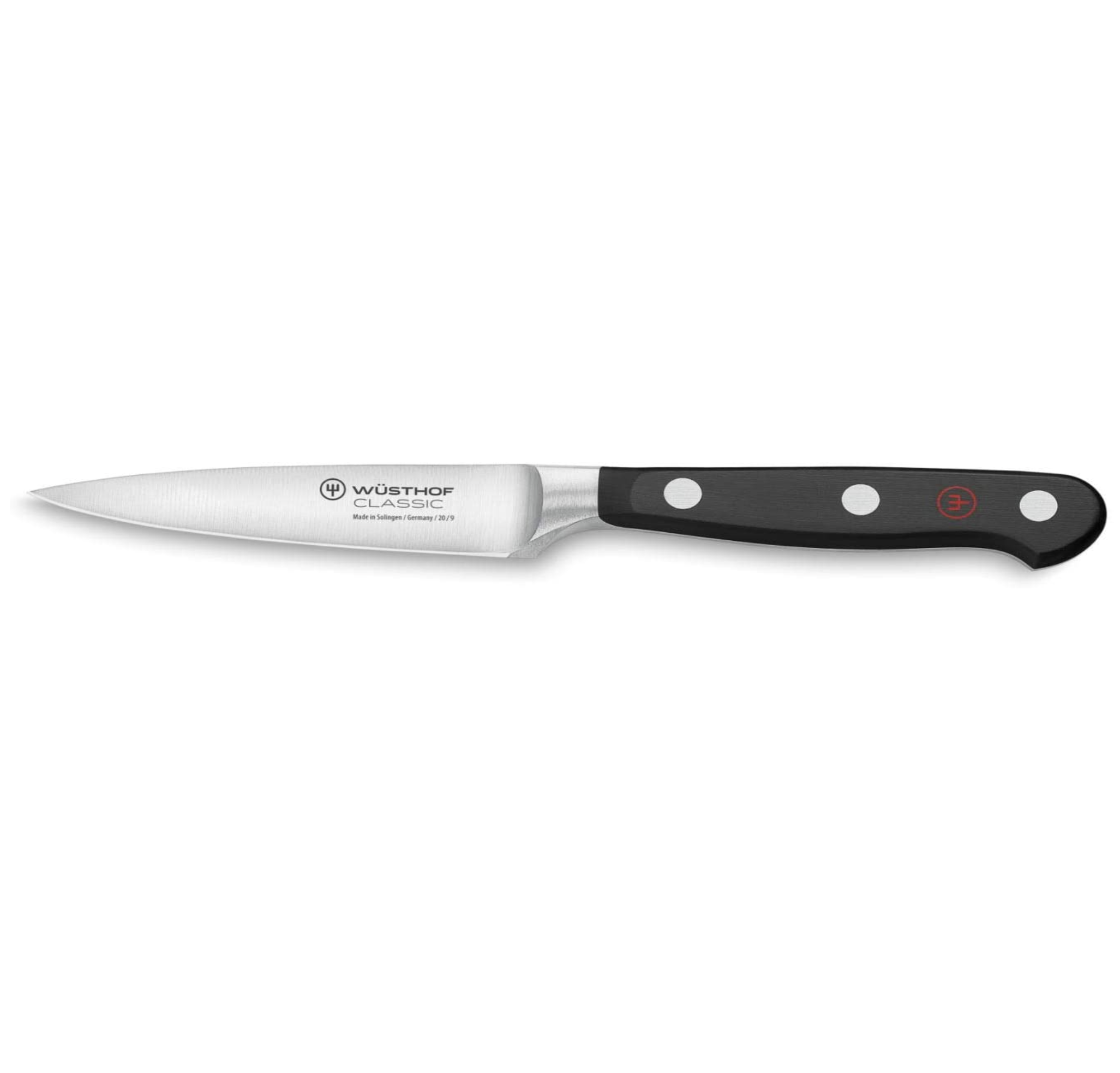
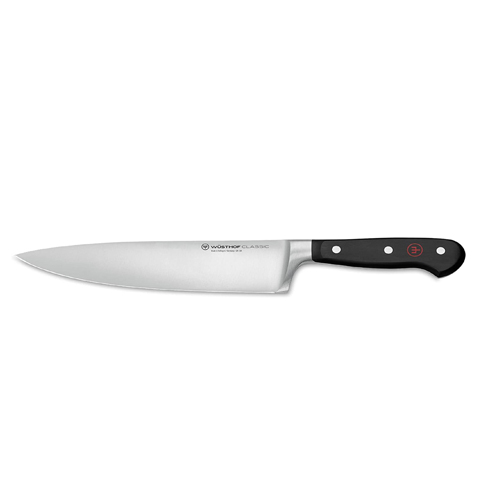

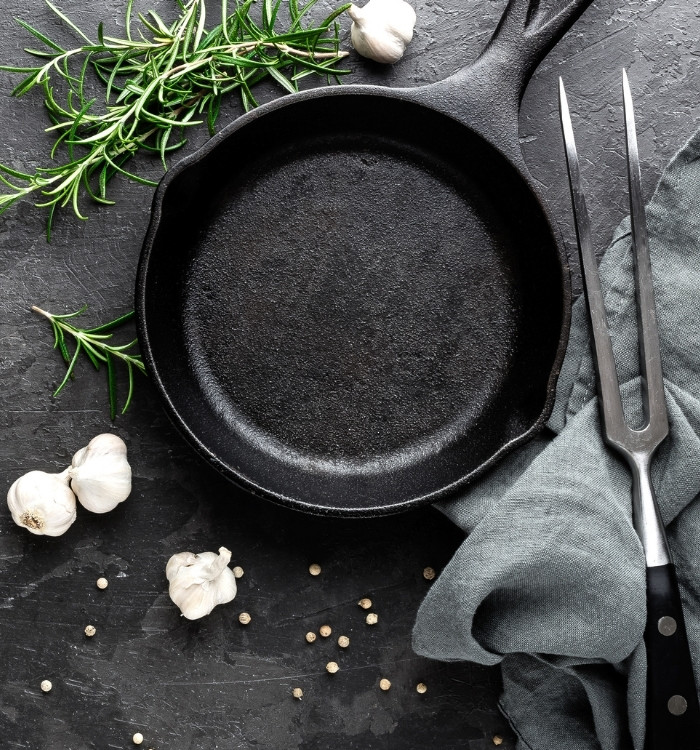




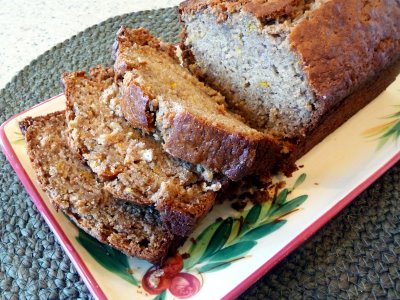



Leave a Comment